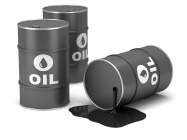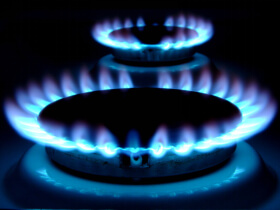
1-800-747-1420



Below is basic information from the exchange for some of the popular commodities that fall under the energy sector.
An energy futures contract is a legally binding agreement for delivery of crude, unleaded gas, heating oil or natural gas in the future at an agreed upon price. The contracts are standardized by the New York Mercantile Exchange (NYMEX), as to quantity, quality, time and place of delivery. Only the price is variable.
Crude oil and natural gas are both unrefined fossil fuels straight from the ground. Crude oil is extracted from the ground with oil wells and sent to a refinery where the hydrocarbons are separated during distillation and other chemical processes. Refineries separate crude oil into many useful refined products. The proportion of each product produced depends on the regional demand of the market. Gasoline prices are heavily influenced by the price of crude oil, given the fact that it is a natural by-product of crude. There can also be seasonal differences in demand for heating fuel versus transportation fuel within a given market. Natural gas does not require refining. Natural gas does require cleaning due to the presence of other gases and liquids.

Crude West Texas Intermediate, (WTI) or light sweet crude futures contracts are the benchmark for the energy market. West Texas Intermediate, (WTI) or light sweet crude is stored and distributed in Oklahoma and has long been a benchmark for oil prices. Its counterpart, Brent crude, comes from the North Sea region and represents prices in Europe, Asia, Africa and Middle East.
Crude oil is often thought of as a commodity, but it also has been considered as a currency and economic barometer. It’s a volatile market, subject to quick price swings due to political, production and weather events.
1,000 barrels
1 cent ($10.00 per cent)
Cents/barrel
Jan, Feb, Mar, Apr, May, Jun, Jul, Aug, Sep, Oct, Nov, Dec
Deliverable
Trading in the current contract month shall cease on the third business day prior to the twenty-fifth calendar day of the month proceeding the contract month. If the twenty-fifth calendar day of the month is a non-business day, trading shall cease on the third business day prior to the last business day preceding the twenty-fifth calendar day.
Maximum Daily Price Fluctuation Futures: Initial limits of $3.00 per barrel are in place in all but the first two months and rise to $6.00 per barrel if the previous day's settlement price in any back month is at the $3.00 limit. In the event of a $7.50 per barrel move in either of the first two contract months, limits on all months become $7.50 per barrel from the limit in place in the direction of the move following a one-hour trading halt.

Natural Gas is becoming the energy source for the future of American independence on foreign oil. Natural gas is the only fuel alternative that can power heavy-industry trucks and buses, among the busiest vehicles on the road.
Natural gas accounts for a large portion of United States energy consumption, and the NYMEX Division natural gas futures contract is widely used as a national benchmark price. The futures contract trades in units of 10,000 million British thermal units (mmBtu). The heaviest demand for natural gas is during the winter months. Colder than usual winters can increase demand for natural gas. Summers are typically the lowest demand periods for natural gas.
Natural gas is refined by removing impurities, including water, to create marketable natural gas. This process produces by-products like ethane, propane, butanes and helium that are cleaned at a gas processing plant and used in a variety of ways. Natural gas, as a commodity, is a convenient energy source that is piped directly from oil fields into homes. Produced domestically, it is distributed to more than 60 million homes and is considered to be a key source in generating electricity and providing energy for new homes.
Oklahoma, Louisiana, Texas, and New Mexico account for 80 percent of the natural gas production in the U.S, while Mexico and Canada account for a small portion of the total consumed. Weather patterns are the known price motivators for this commodity futures product, but in recent years global tensions have had a nearly equal impact.
10,000 million British thermal units (mmBtu)
$0.001 per MMBtu
Cents/MMBtu
Jan, Feb, Mar, Apr, May, Jun, Jul, Aug, Sep, Oct, Nov, Dec
Deliverable
Trading of any delivery month shall cease three (3) business days prior to the first day of the delivery month. In the event that the official Exchange holiday schedule changes subsequent to the listing of a Natural Gas futures, the originally listed expiration date shall remain in effect. In the event that the originally listed expiration day is declared a holiday, expiration will move to the business day immediately prior.

RBOB is an acronym for “Reformulated Gasoline Blendstock for Oxygenate Blending”. The new popularity of RBOB in the exchanges owes much of its success to state legislation banning gasoline with MTBE. This chemical was found in unleaded gasoline and posed a threat for people and wildlife because it polluted groundwater sources. As a result, RBOB, which does not contain MTBE, has quickly grown in popularity with futures traders, and it has also become the new benchmark gasoline contract.
The refinement process of crude oil creates by products like gasoline. For every 3 barrels of crude oil that are refined, about 2 barrels of gasoline are produced. The octane rating of gasoline is an essential subject to understand about this energy. The higher the rating, the higher the compression rate, which means more efficient fuel that is capable of a higher output compared to lower rated fuels. Premium gasoline has an octane rating of 90 or higher and is more efficient than regular unleaded gas. The futures price of RBOB tends to follow the same pattern as crude oil.
Gasoline is the single largest refined product in the U.S. and accounts for half of the national consumption of oil. There are many factors such as government laws, which can affect the price. Hurricanes in the Gulf of Mexico can cause price spikes in RBOB futures, since most of the U.S refineries are located in that area. About 65 cents in taxes added to the price of gas futures equates the retail price paid at the pump. The retail price usually lags about a week.
42,000 gallons
$0.0001 per gallon
Cents/Gallon
Jan, Feb, Mar, Apr, May, Jun, Jul, Aug, Sep, Oct, Nov, Dec
Deliverable
Trading in a current delivery month shall cease on the last business day of the month preceding the delivery month.

Traditionally, the contract referenced heating oil fuel, used largely in homes throughout the Northeast of the United States. But starting in 2013, the contract has been based on a slightly different fuel mix called ultra low sulfur diesel, or ULSD.
As the name implies, ULSD contracts are used to take a position in the diesel fuel market, as well as on the home heating market and the seasonal swings in prices it produces. It is also is considered as a way to gain exposure to the jet fuel market. In short, this contract is considered the “middle distillate benchmark.”
Heating oil has been used throughout the history of the world. However, it was first widely used in the eighteenth and nineteenth century as a source of lighting. Heating oil is produced at oil refineries. Crude oil is broken down during the refining process, and separated into various fuels like gasoline, kerosene, diesel, lubricating oil and heating oil. The price of heating oil is influenced by many factors. In order to reduce the impact of these price fluctuations on producers or refiners, heating oil futures were introduced. Heating oil doesn't ignite until its temperature reaches 140 degrees and then it vaporizes. Unlike natural gas, you normally have warning signs of an oil system breakdown, like smoke, odors or soot. Natural gas is explosive and leaks are a leading cause of carbon monoxide deaths.
42,000 gallons
$0.0001 per gallon
Cents/Gallon
Jan, Feb, Mar, Apr, May, Jun, Jul, Aug, Sep, Oct, Nov, Dec
Deliverable
Trading in a current delivery month shall cease on the last business day of the month preceding the delivery month.

Our early ancestors first used ethanol, which is basically fermented sugar, as a very intoxicating alcoholic beverage. Today, government and private sector research funds have been pumped into ethanol development as a biofuel, but its long-standing popularity as a feedstock, solvent, and liquor has kept traders and speculators interested in the energies markets for decades. When blended with gasoline, ethanol can be used as an effective fuel source. The rising production and use of ethanol can be positively correlated with corn production as well, possibly having an impact on the agricultural market.
Ethanol, also known as ethyl alcohol or grain alcohol, is a flammable, colorless chemical compound, one of the alcohols that is most often found in alcoholic drinks. When people talk about it, they often name it simply as alcohol. Ethanol is blended into 46% of America’s gasoline, most as E10. There are roughly 140 billion gallons consumed in the US each year. In 2005, 14% of the nation's corn crop was used for ethanol production. Ethanol has a positive energy balance – that is, the energy content of ethanol is greater than the fossil energy used to produce it. This balance is constantly improving with new technologies. A high-protein animal feed, known as Distiller's Dried Grains with Solubles (DDGS), is produced in the process of making ethanol from corn. Ethanol blends in use today have little impact on fuel economy or vehicle performance. While ethanol delivers less energy than gasoline on a gallon-for-gallon basis, today's vehicles are designed to run on gasoline blended with small amounts of ethanol (10 percent or less) with no perceptible effect on fuel economy. While ethanol delivers less energy than gasoline on a gallon-for-gallon basis, today's vehicles are designed to run on gasoline blended with small amounts of ethanol (10 percent or less) with no perceptible effect on fuel economy.
29,000 gallons (approximately one railcar)
$0.001 per gallon ($1.827 to $1.828 = $29.00 per contract)
Cents/Gallon
Jan, Feb, Mar, Apr, May, Jun, Jul, Aug, Sep, Oct, Nov, Dec
Physical delivery
The third business day of the delivery month
Disclaimer :Trading futures and options involves the risk of loss. You should consider carefully whether futures or options are appropriate to your financial situation. You must review the customer account agreement and risk disclosure prior to establishing an account. Only risk capital should be used when trading futures or options. Investors could lose more than their initial investment. The lower the day trade margin the higher the leverage and riskier the trade. Leverage can work for you as well as against you, it magnifies gains as well as losses. Past results are not necessarily indicative of futures results. The risk of loss in trading futures or options can be substantial, carefully consider the inherent risks of such an investment in light of your financial condition. Low rates are for online trading clients only. Other brokerage fees may apply to certain platforms. Accounts requiring broker assistance will be charged higher rates.
